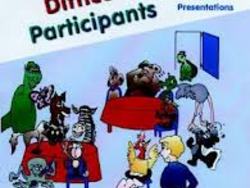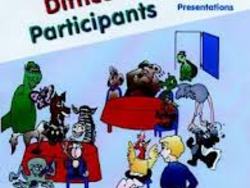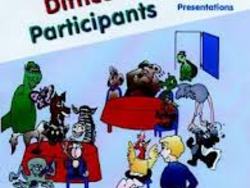


Adapted from Dreams, Volume One and Dealing with Difficult Participants
Having me lecture during a seminar may get information out there, but it may not be the best way to present. Asking participants to accept everything I say just because I’m the presenter probably is not the most effective way to transfer knowledge or motivate participants.
Rather than presenting 15 characteristics of an effective leader, I might choose to have small groups discuss the most effective leaders they’ve ever known and identify the characteristics that made those leaders effective. Normally, the groups will come up with about 80 percent of those traits. It’s easy, then, for the instructor to fill in the other 20 percent.
Whether it’s a technical course, management course, or sales course, the concept works. This technique is also especially effective when faced with difficult participants.
Who’s responsibility is training transfer? Who is responsible for ensuring that learning takes place for any one person? And who is responsible for minimizing the disruptions that can keep learning from taking place? The instructor? The disruptor? Other participants? Yes, yes, yes.
The goal of most workplace training is to produce improved results on the job. Success is measured not in content covered or tests passed but according to what is actually used on the job. If we keep that in mind, we see that responsibility for the learning process—and it’s on-the-job application—goes beyond the instructor and participant.
But let’s look specifically at the instructor since that’s the role you and I traditionally fill. An instructor’s two goals in dealing with difficult participants should be the following:
1. If possible, get the difficult participant on board and
2. Minimize any negative impact the difficult participant might have on others in class.
If the participants in your class are like most, they crave the acceptance, acknowledgement and support of their peers. The more you use small groups in your program, the more this truism will be apparent in reducing the tendency for anyone to be a difficult participant. In the Application Matrix we use at the Bob Pike Group, we have 15 types of difficult participants ranging from the pre-occupied, and the prisoner to the domineering, the skeptic, and the confused.
With a small group activity like discussing and listing the characteristics of effective leaders, you gain the interest and participation of the seminar attendees as well as their buy-in to the training session. This technique is “good” or “excellent” with 14 of the 15 difficult participants.
Dreams, Volume One is a collection of “working words of wit and wisdom” compiled by Bob Pike and illustrated by Cindi Sonntag.
Dealing with Difficult Participants was written by Bob Pike and Dave Arch. Click here for more information.
Don't miss out on updates and chances
to sharpen your skills with participant-centered learning.




3740 N Chestnut St #113 - Chaska, MN 55318-3053